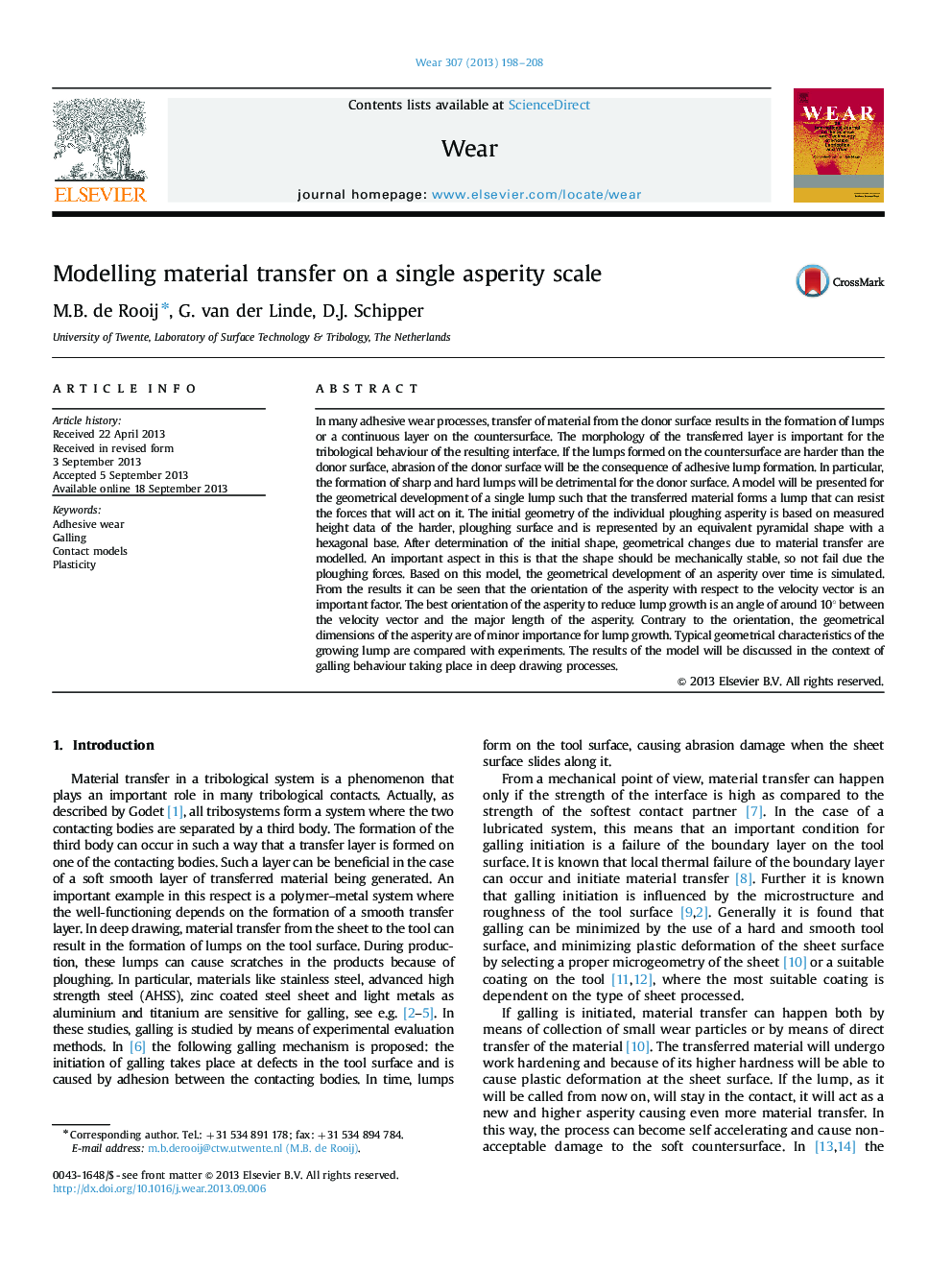| کد مقاله | کد نشریه | سال انتشار | مقاله انگلیسی | نسخه تمام متن |
|---|---|---|---|---|
| 617489 | 1454995 | 2013 | 11 صفحه PDF | دانلود رایگان |

• An model, based on mechanical stability, is presented predicting the geometrical shape of asperities subject to material transfer.
• Based on this model, the geometrical development of an asperity over time is simulated.
• The results of the model will be discussed in the context of galling behaviour taking place in deep drawing processes.
In many adhesive wear processes, transfer of material from the donor surface results in the formation of lumps or a continuous layer on the countersurface. The morphology of the transferred layer is important for the tribological behaviour of the resulting interface. If the lumps formed on the countersurface are harder than the donor surface, abrasion of the donor surface will be the consequence of adhesive lump formation. In particular, the formation of sharp and hard lumps will be detrimental for the donor surface. A model will be presented for the geometrical development of a single lump such that the transferred material forms a lump that can resist the forces that will act on it. The initial geometry of the individual ploughing asperity is based on measured height data of the harder, ploughing surface and is represented by an equivalent pyramidal shape with a hexagonal base. After determination of the initial shape, geometrical changes due to material transfer are modelled. An important aspect in this is that the shape should be mechanically stable, so not fail due the ploughing forces. Based on this model, the geometrical development of an asperity over time is simulated. From the results it can be seen that the orientation of the asperity with respect to the velocity vector is an important factor. The best orientation of the asperity to reduce lump growth is an angle of around 10° between the velocity vector and the major length of the asperity. Contrary to the orientation, the geometrical dimensions of the asperity are of minor importance for lump growth. Typical geometrical characteristics of the growing lump are compared with experiments. The results of the model will be discussed in the context of galling behaviour taking place in deep drawing processes.
Journal: Wear - Volume 307, Issues 1–2, 30 September 2013, Pages 198–208